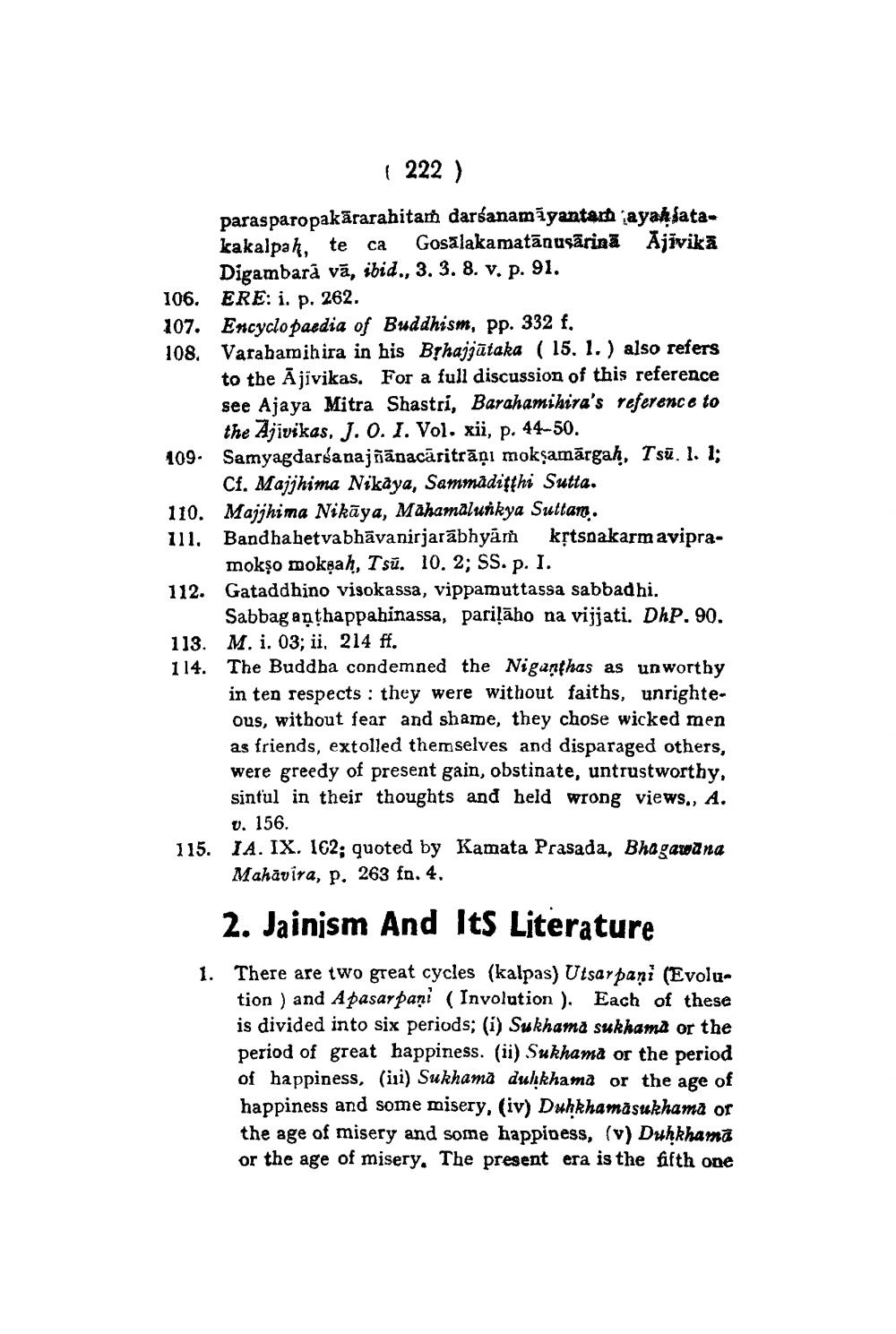________________
( 222 )
parasparopakārarahitam darśanamāyantark ayaksatakakalpah, te ca Gosalakamatānusārinā Ajivika
Digambarā vā, ibid., 3. 3. 8. v. p. 91. 106. ERE: i. p. 262. 107. Encyclopaedia of Buddhism, pp. 332 f. 108. Varahamihira in his Bșhajjūtaka ( 15. 1. ) also refers
to the Ājivikas. For a full discussion of this reference see Ajaya Mitra Shastri, Barahamihira's reference to
the Ajivikas, J. 0. I. Vol. xii, p. 44-50. 109. Samyagdarsanajñānacāritrāņi moksamārgah, Tsü. l. 1;
Cf. Majjhima Nikaya, Sammadifthi Sutta. 110. Majjhima Nikāya, Mahamalunkya Suttam. w Bandhahetvabhāvanirjarābhyam krtsnakarm avipra
mokṣo mokşah, Tsū. 10. 2; SS. p. I. 112. Gataddhino visokassa, vippamuttassa sabbadhi.
Sabbag anthappahinassa, pariļāho na vijjati. DhP. 90. 113. M. i. 03; ii, 214 ff. 114. The Buddha condemned the Niganthas as unworthy
in ten respects: they were without faiths, unrighteous, without fear and shame, they chose wicked men as friends, extolled themselves and disparaged others, were greedy of present gain, obstinate, untrustworthy, sintul in their thoughts and held wrong views., A.
v. 156. 115.
IA. IX. 162; quoted by Kamata Prasada, Bhagawana Mahavira, P. 263 fn. 4.
2. Jainism And Its Literature
There are two great cycles (kalpas) Utsar pani (Evolution) and Apasar pani (Involution ). Each of these is divided into six periods; (i) Sukhama sukhamå or the period of great happiness. (ii) Sukhama or the period of happiness, (iii) Sukhama dukkhama or the age of happiness and some misery, (iv) Duhkhamāsukhama or the age of misery and some happiness, (v) Duhkhama or the age of misery. The present era is the fifth one




